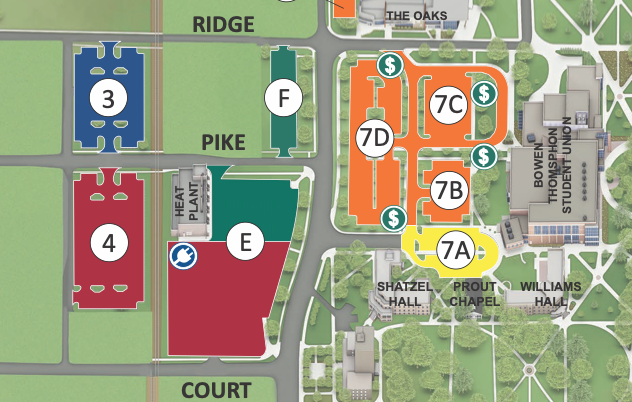Bowling Green city workers are struggling to keep up with road repairs on East Wooster Street.
Potholes plague the city’s busiest street west of I-75. The Public Works Department has been trying its best to keep up with repairs, but continuous falling snow and ice has prevented city workers from making more permanent repairs.
Public Works Director Brian Craft said heavy snowfall and frigid temperatures are to blame.
“This winter has been much worse [than usual],” Craft said. “But we aren’t alone.”
Bowling Green and surrounding cities saw more than two times the average amount of snowfall accumulations last month than in past years, according to the National Weather Service website.
Craft said the department is using a cold patch process to repair potholes, but those repairs are only a short-term solution.
A cold patch functions as a temporary solution when temperatures are too low and moisture is too high to put down a more permanent patch.
As temperatures rise and fall, a freeze-thaw cycle breaks down paved roads and cold patches are easily undone.
“Nothing is more frustrating for us than the freeze-thaw cycle,” Craft said.
Bowling Green citizens are frustrated, too. University alumnus Edward Schwartz said he’s all too familiar with the pothole problems in town.
“I’ve ridden on the University shuttles around town and been bounced around like a rock tumbler,” Schwartz said.
East Wooster Street underwent construction and repaving 10 years ago. The street is full of utility lines under the surface that contributes to the unusually high amount of potholes, Craft said.
“The more utilities under the surface, the more likely it is to have potholes,” Craft said.
Craft said the Public Works Department has been working day and night to keep up repairs on the roads.
During the day, city workers apply patches to the roads while temperatures are above 10 degrees, which makes them more effective. At night, the department turns its focus on keeping the roads clear of ice by running plows and laying rock salt.
As more snow is hauled away, citizens will be able to move their cars closer to curbs and city workers can make roads more passable.
Working around the clock has taken its toll on the department’s budget, however.
Public Works has already exhausted nearly its entire yearly overtime budget for employees in just a month and a half.
The department may catch a break later this week as temperatures are forecasted to rise to nearly 50 degrees.
With higher temperatures, the department will lay a more permanent solution called a durapatch. In order for these patches to be the most effective, low amounts of moisture and precipitation are needed.
Other roads in the city are in good shape according to Craft.
“We’re hoping to have the problems fixed in maybe a month,” he said.













